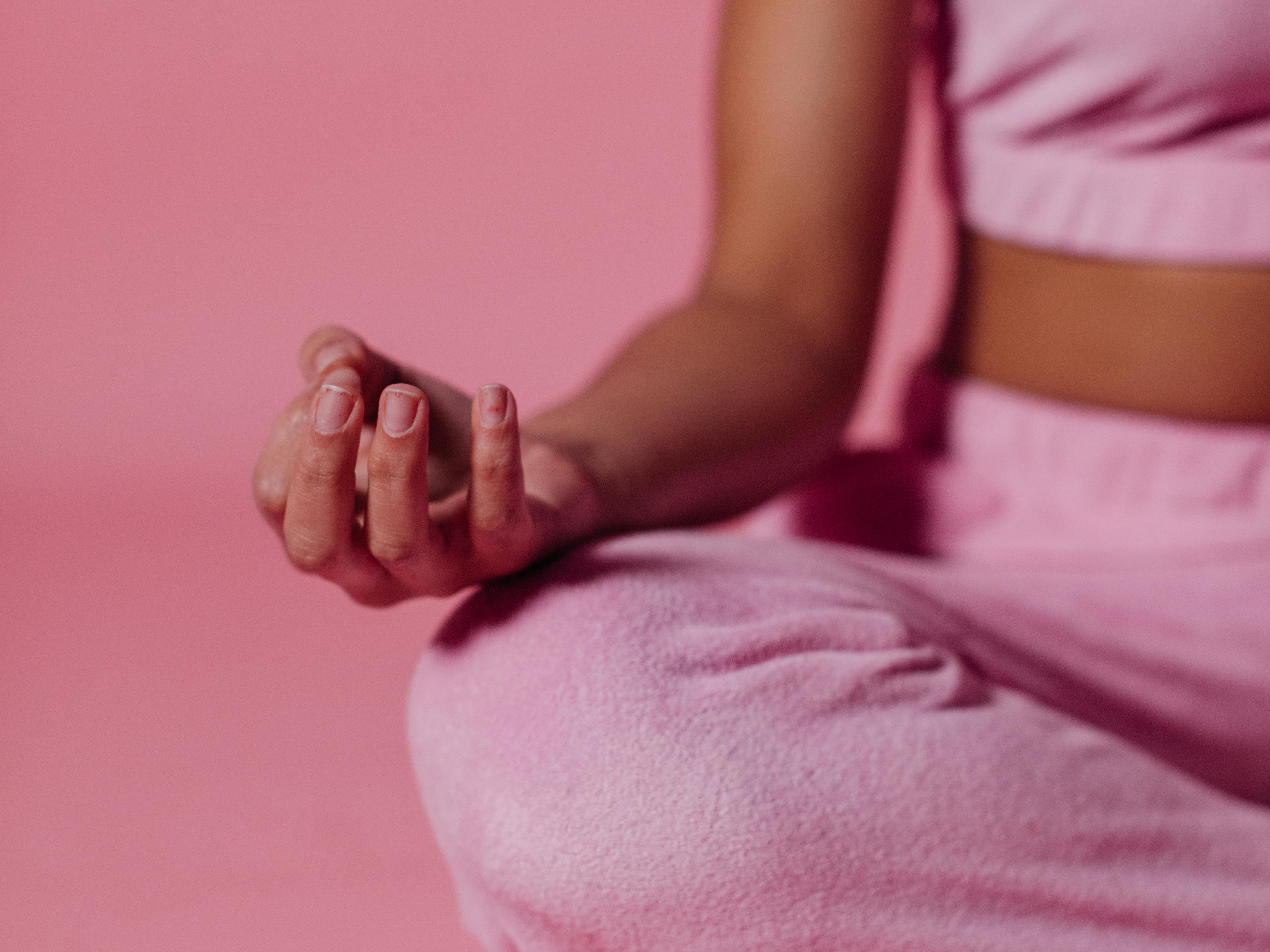Search for yoga retreats
Discover yoga retreats, holidays, and courses from worldwide.
Yoga is a multifaceted practice that extends far beyond physical postures. As you delve deeper into your yoga journey, whether through immersive yoga retreats or comprehensive yoga teacher training programs, you'll discover the transformative power of mudras - ancient hand gestures that can profoundly impact your mind, body, and spirit.
Understanding the Essence of Mudras
Mudras are precise hand positions that channel and direct energy flow within the body. These gestures tap into the body's subtle energy systems, influencing various physical and mental aspects of our being. By incorporating mudras into your practice, you can enhance the benefits of your yoga sessions and address specific health concerns.
The Five Elements and Body Balance
Traditional yogic philosophy recognizes five fundamental elements that compose our body and the universe: Earth, Water, Fire, Air, and Space. When these elements are in harmony, we experience optimal health and well-being. However, imbalances can lead to physical discomfort, mental unrest, and even illness. Mudras offer a practical way to restore and maintain this delicate equilibrium.

8 Essential Mudras to Transform Your Practice
- Gyan Mudra (Wisdom Gesture) Purpose: Enhances mental clarity and focus Technique: Connect the tip of your index finger to your thumb, keeping other fingers extended. Duration: Practice for 15-20 minutes daily, preferably in the morning. Benefits:
- Sharpens memory and concentration
- Reduces stress and anxiety
- Promotes better sleep quality
- Vayu Mudra (Air Gesture) Purpose: Balances the air element in the body Technique: Bend your index finger, pressing it with your thumb. Duration: Hold for 10-15 minutes, three times a day. Benefits:
- Alleviates joint pain and arthritis symptoms
- Improves digestion and reduces bloating
- Calms an overactive mind
- Prana Mudra (Life Force Gesture) Purpose: Boosts overall vitality and energy Technique: Touch the tips of your ring and little fingers to your thumb, extending the other fingers. Duration: Practice for 30 minutes daily, focusing on deep, rhythmic breathing. Benefits:
- Strengthens the immune system
- Enhances visual acuity
- Increases overall energy levels
- Shunya Mudra (Emptiness Gesture) Purpose: Supports ear and bone health Technique: Bend your middle finger and press it at the base of your thumb. Duration: Hold for 15 minutes, three times daily. Benefits:
- Relieves ear discomfort and improves hearing
- Strengthens bones and teeth
- Supports thyroid function
- Apan Mudra (Digestion Gesture) Purpose: Enhances detoxification and digestive processes Technique: Connect the tips of your middle and ring fingers to your thumb, keeping other fingers straight. Duration: Hold for 20-30 minutes each day. Benefits:
- Aids in body detoxification
- Alleviates constipation and digestive issues
- Supports kidney and heart health
- Surya Mudra (Sun Gesture) Purpose: Boosts metabolism and body heat Technique: Bend your ring finger and press it at the base of your thumb. Duration: Practice for 30 minutes in the morning for optimal results. Benefits:
- Aids in weight management
- Improves digestion and appetite
- Enhances circulation and body warmth
- Varun Mudra (Water Gesture) Purpose: Balances the water element in the body Technique: Lightly touch the tip of your little finger to your thumb. Duration: Practice as needed, with no specific time limit. Benefits:
- Improves skin health and hydration
- Enhances communication skills
- Promotes emotional balance
- Ling Mudra (Heat Gesture) Purpose: Generates body heat and supports respiratory health Technique: Interlock the fingers of both hands, keeping your right thumb erect. Duration: Hold for 20-30 minutes daily. Benefits:
- Alleviates cold symptoms and congestion
- Supports overall respiratory function
- Boosts the body's internal heat
Integrating Mudras into Your Yoga Practice

To fully harness the power of mudras, consider these strategies for incorporating them into your daily routine:
- Start with intention: Choose mudras that align with your current physical or mental needs.
- Combine with breath work: Pair mudras with specific pranayama techniques to amplify their effects.
- Practice consistently: Aim for daily mudra practice, even if it's just for a few minutes.
- Explore during yoga retreats: Many retreats offer specialized workshops on mudras, providing an ideal environment to deepen your practice.
- Learn in-depth during yoga teacher training: Understanding mudras is crucial for aspiring yoga instructors, as it adds depth to your teaching toolkit.
- Be mindful: Pay attention to the sensations in your hands and body as you hold each mudra.
- Experiment with timing: Try practicing mudras at different times of day to see when they're most effective for you.
- Combine with meditation: Incorporate mudras into your meditation practice for enhanced focus and energy direction.
- Use during asana practice: Explore how certain mudras can complement specific yoga poses.
- Keep a practice journal: Document your experiences with different mudras to track their effects over time.
Mudras for Specific Goals
Different mudras can be particularly beneficial for common objectives in yoga practice:
- For stress relief:
- Gyan Mudra
- Apan Vayu Mudra (combination of Gyan and Vayu Mudras)
- For improved focus during meditation:
- Chin Mudra (consciousness seal)
- Jnana Mudra (gesture of wisdom)
- For energy boost:
- Prana Mudra
- Surya Mudra
- For emotional balance:
- Apan Mudra
- Varun Mudra
The Science Behind Mudras
While mudras have been used in yoga and meditation for thousands of years, modern science is beginning to explore their potential benefits. Some studies suggest that specific hand positions can influence brain activity and nervous system function. The pressure points activated in various mudras may stimulate certain areas of the brain, potentially leading to the reported benefits.
However, it's important to approach mudras with an open mind and personal experimentation. What works best for one practitioner may differ for another.
Mudras in Daily Life
You don't need to be on a yoga mat to practice mudras. These hand gestures can be incorporated into your daily routine:
- Practice Gyan Mudra while reading or studying to enhance concentration.
- Use Prana Mudra during your morning commute to boost energy levels.
- Hold Apan Mudra after meals to support digestion.
- Try Varun Mudra during conversations to improve communication.
Remember, consistency is key. Regular practice, even for short periods, can lead to noticeable benefits over time.

Conclusion
Mudras offer a subtle yet powerful way to enhance your yoga practice and overall well-being. Whether you're exploring these techniques during an immersive yoga retreat or deepening your understanding through yoga teacher training, mudras can add a new dimension to your yogic journey.
By incorporating these hand gestures into your daily routine, you're tapping into an ancient practice that can bring balance, healing, and transformation. As you continue to explore the world of mudras, remain curious and attentive to your body's responses. With time and practice, you may find that these simple hand positions become an indispensable part of your yoga toolkit, helping you navigate life's challenges with greater ease and clarity.
Craving More Stories?
Join our ShopYogaRetreats newsletter for the latest updates on thrilling
destinations and inspirational tales, delivered straight to your inbox!
We value your privacy. Your email address will never be shared or published.
 English
English Deutsch
Deutsch Français
Français Nederlands
Nederlands Español
Español

